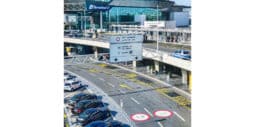

24786 views

| Tip | The hill is located in the historical center of Rome. Thus, you can easily reach it on foot while exploring the main sights of the Eternal City. |
|---|---|
| Address | Quirinal Hill, Roma |
Quirinal hill (or Collis Quirinalis) is the highest and northernmost of the seven Roman hills. Its height constitutes 61 meters, which makes it a perfect place to escape from hot Roman summers. Being one of the most popular tourist destinations, the Quirinal Hill opens up splendid city views from its top.
Contents
ToggleAs the ancient Roman legend has it, the hill was initially inhabited by the small village of Sabines (Italic people that inhabited territories of ancient Italy before the founding of Rome). The first king of Rome – Romulus, organized a festivity and invited Sabines. In the midst of celebrations, Sabine women were kidnapped, and Sabine men were expelled. After a couple of years, Sabine king Titus Tatius went to war against Romulus. The conflict was stopped by Sabine women who ran to the streets holding children they all already had with Romans. The women bowed two rulers to reconciliation.
Since then, Sabines have erected altars dedicated to their god – Quirinus (analogy of Roman god Mars – god of war), hence the name of the hill came from.
During the Republican period, Quirinal Hill became a beloved place of Roman nobility. In addition to calm breaths of wind during the summertime, Quirinal Hill was foremost famous for its greenery. The history mentions such well-known people as Narcissus (freedman), Flavius Sabinus (brother of the emperor Vespasian), and emperor Vespasian himself having their villas built on the hill. Constantine the Great erected the thermae complex, which is considered to be the last bath complex built in imperial Rome.
Today, Quirinal Hill still retains its status as a luxurious and expensive district of Rome. The territory of the hill includes some world-renown brand shops, hotels and embassy buildings. Despite this, tourists are still able to see the monuments of the glorious Roman past on their way.
Following is the list of must-visit places and the instructions on how to get to Quirinal Hill.
One of the most prominent monuments on the hill, the Quirinal Palace (Palazzo del Quirinale), is today considered to be the official residence of the President of the Italian Republic.
The construction of the palace was ordered by Pope Gregory XIII in 1583 and was aimed to become a summer papal residency. Moreover, in 1823, 1829, 1831, and 1846, the palace was used to host papal conclaves. It served as papal residence up until 1870, when the Papal States was overthrown, and Rome became the capital of the newly created Kingdom of Italy. The Quirinal palace served as a royal residence until 1946 when the monarchy was abolished, and from that time on, it remained a residence of the President of the Italian Republic.
The palace is open for visits all week, except for Mondays and Thursdays from 9:30 am to 4 pm. The entrance fee is 10 euro, though this has to be clarified at the ticket box or on the website of the palace.
Located right in front of the Quirinal palace, piazza Montecavallo (meaning horse hill) received its name from two statues of Castor and Pollux located at the feet of the obelisk. Each statue flanked with a horse depicts two brothers, who in Roman mythology were considered to be the patron gods of horses.
Interestingly, the author of the obelisk and fountain still remains unknown today. For example, some experts believe that the obelisk is a replica of the ancient Greek monument
It is also believed that the obelisk used to stand at the entrance of Constantine’s thermae complex in 351, while previously, it embellished the mausoleum of Augustus. The obelisk was moved to Piazza di Montecavallo in 1786 and had a height of about 15 meters.
Barberini Palace (Palazzo Barberini) is a beautiful seventeenth-century building that today houses the National Gallery of Ancient Arts (Galleria Nazionale d’Arte Antica).
Although built in 1549 by the Sforza family, the palace then was acquired by Maffeo Barberini in 1625, who soon became Pope Urban VIII. The modern appearance of the palace was reached through the hard work of famous architects such as Carlo Maderno and Bernini.
Today, the gallery hosts numerous artworks that overall constitute one of the most important painting collections of Italy. The gallery proudly exhibits works of Raphael and Caravaggio.
Originally constructed as an addition to the palace, piazza Barberini stands out with its own uniqueness. First of all, the fountain of Triton (Fontana di Tritone) is located right at the center of the square, and it has become one of the most famous Roman fountains. Designed by Bernini in 1642, the fountain depicts Triton, surrounded by dolphins, who drink out of giant sea shells. Moreover, you can visit Barberini cinema, which often showcases movies in English, or just relax in one of the numerous bars that surround Piazza Barberini.
Author: Kate Zusmann
This website uses cookies. For more info read the cookies policy
Rome.us © 2025. Created with love by Roman experts and guides.